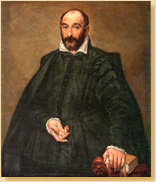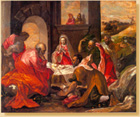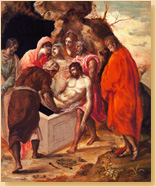
Portrait of a Man
|
We should clearly point out that regardless of aesthetic preferences, a closer contact with important moments of the history of European art and of that of other continents and cultures as well, is greatly needed in our country. Collective introversion has never been productive. We should go through the kiln of the creation of others with open rather than with closed eyes, in order to be able to give expression to our present realities and to our history.
The present exhibition, where important works by eleven Venetian masters are shown alongside with numerous works by the artist from Crete, derives from the above mentioned viewpoint. In addition, visitors will have an opportunity to admire two particularly instructive works, whose creators are unknown. We hope that this may enable us to go a little beyond the fetishism of great names, which does not mean that we dismiss the contribution of each gifted artist, but that we should appreciate the individual merit of each work per se, independently of the label it bears.
|



